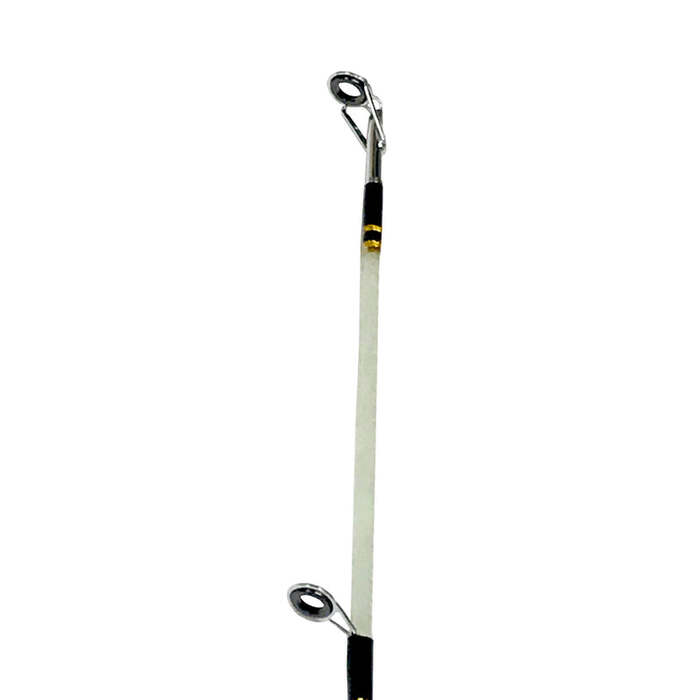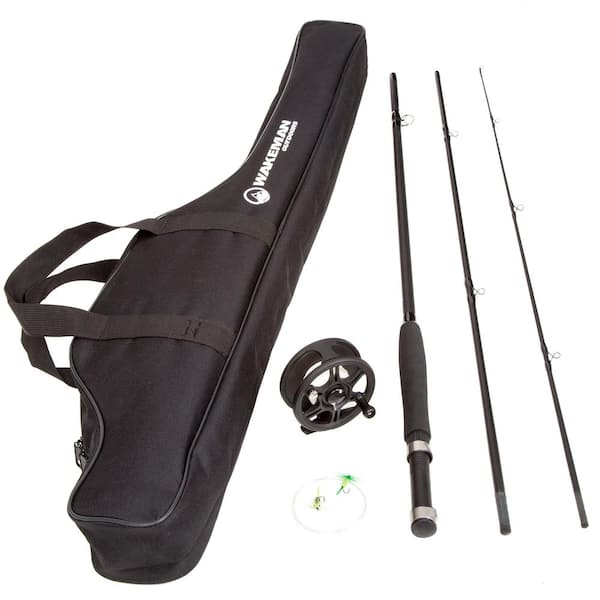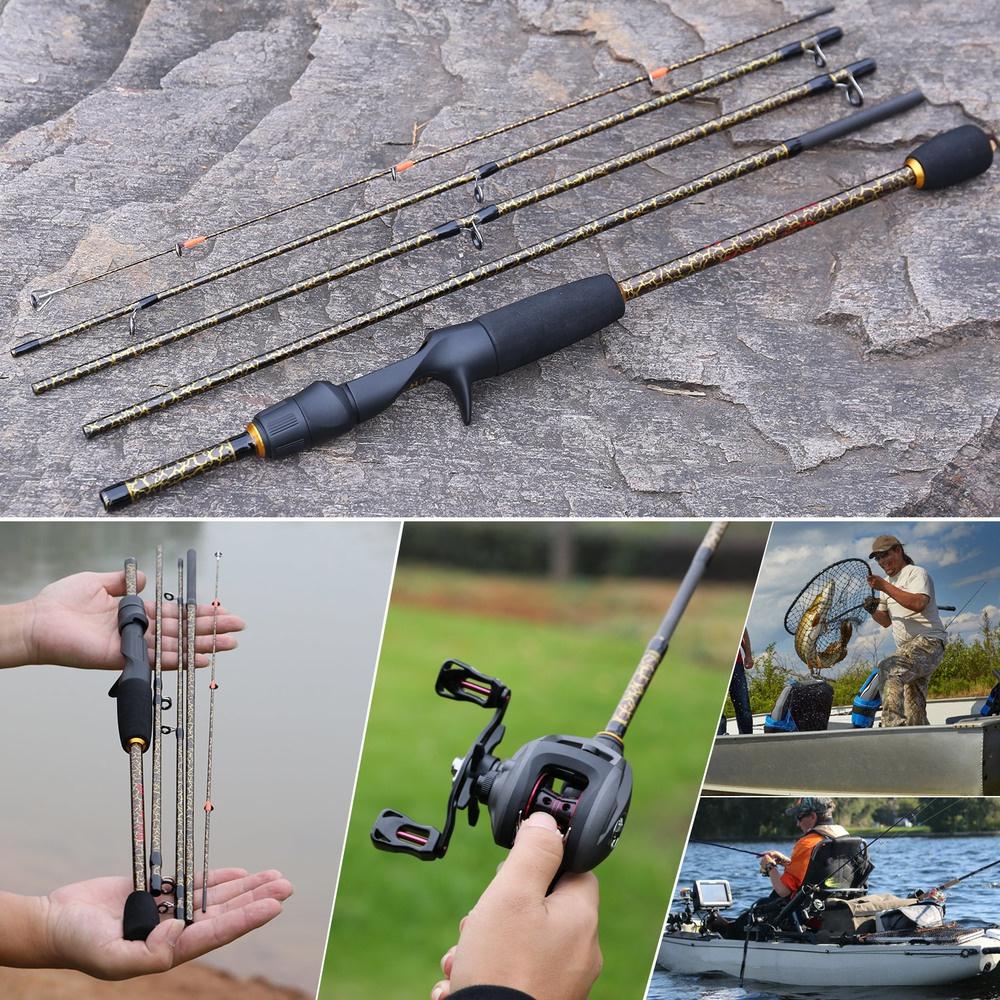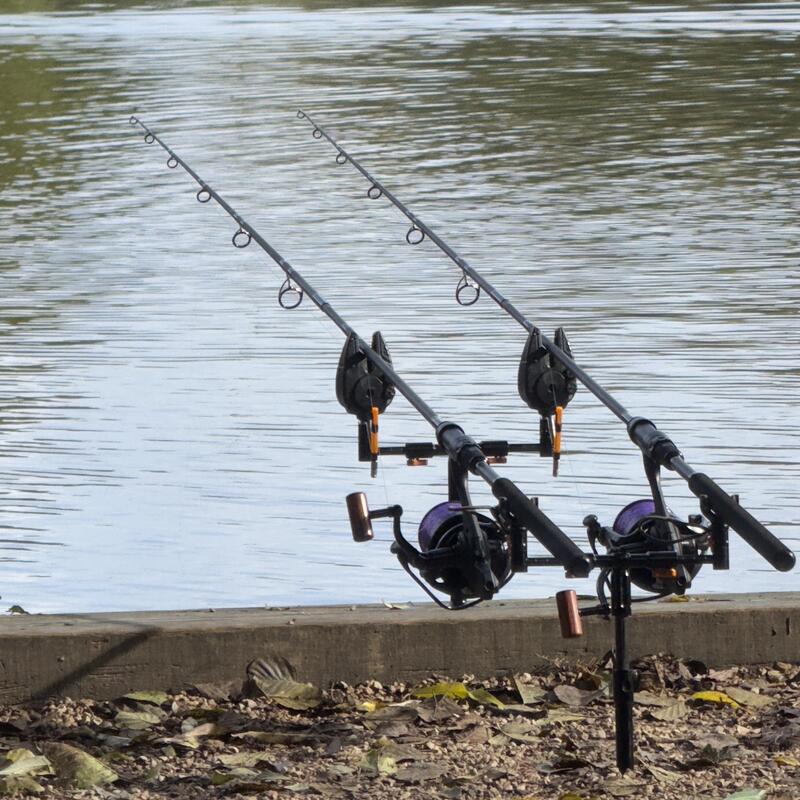Common Causes of Fishing Rod Damage
Understanding the common causes of damage can help you prevent issues and know how to fix a broken fishing rod. Fishing rods can break due to various reasons. Two of the most frequent causes you’ll encounter are accidental breakage and wear and tear over time.
Accidental Breakage
Accidental breakage usually happens in the blink of an eye. An accidental fall, stepping on the rod, or closing it in a door can cause sudden breaks. Hitting your rod hard against a solid object while casting is also a common mishap. In these cases, the damage is often visible and can range from a minor crack to a complete break. These accidents are not always preventable, but careful handling can reduce risks.
Wear and Tear Over Time
Fishing rods also suffer from wear and tear with regular use. Over time, constant stress can lead to fractures in the rod’s material. Environmental factors such as exposure to sunlight and saltwater can degrade the rod’s components. Ferrules can loosen, and the rod’s finish may crack or peel after rough use. Regular maintenance can identify early wear and extend the life of your rod, preventing severe damage later on.

Signs That Your Fishing Rod May Need Repairs
Recognizing the signs that indicate a need for repair is crucial for any angler. To maintain your fishing rod’s performance and longevity, stay alert to these signals.
Visual Inspection
Start with a close look at your fishing rod. Search for any signs of cracks, splits, or stress fractures. Check the guides for damage or misalignment. Inspect the handle and reel seat for wear. If you see any irregularities, it’s likely time for a repair.
Performance Issues
Next, consider how your rod feels during use. A loss of sensitivity or difficulty casting can signify internal damage. If your rod doesn’t flex or respond as it should, it may be compromised. Unexpected tangles or line snags also point to potential rod damage.
Tools and Materials Needed for Rod Repair
To embark on fixing your fishing rod, having the right tools and materials on hand is a must. A proper repair job ensures that your rod retains its integrity and continues to function well on your fishing excursions. Let’s go through the essentials and some additional items that might come in handy for specific repairs.
Essential Repair Kits
A basic rod repair kit should include several key components:
- Epoxy or a strong adhesive for bonding broken pieces.
- Fiberglass or graphite cloth for patching cracks or reinforcing weak spots.
- Sandpaper to smoothen the repair area before and after applying adhesives.
- Thread for wrapping guides which might have come loose or need replacement.
- A razor blade or a sharp knife for trimming excess material.
These kits often come with simple instructions on how to use each item correctly for common repairs.
Additional Tools for Specific Repairs
Depending on the severity of the damage, you might need some specialized tools:
- A heat gun or a hairdryer for removing old wraps or adhesives.
- Rod wrapping tools in case you have to redo guide wraps extensively.
- A rod dryer, which is crucial when applying and drying epoxy evenly.
- Replacement parts like new guides, reel seats, or handles that match your rod model.
With these tools, you’ll be well-prepared to tackle most issues. Remember that the success of DIY rod repair often depends on the quality of the materials used. Investing in good repair kits and tools will pay off by extending the life of your fishing gear.

Step-by-Step Guide to Fixing a Broken Fishing Rod
Fishing enthusiasts know the heartbreak of a broken fishing rod. Here’s a detailed guide to fix it.
Preparing the Rod
Before you begin, ensure you have all your tools and materials from your repair kit. Clean the damaged area with a cloth to remove dirt or grime. If the rod is splintered, carefully remove any loose fibers with tweezers. Apply masking tape on both sides of the break to protect the rest of the rod.
Implementing the Repair Process
- Align the Broken Pieces: For a clean break, align the rod’s broken edges accurately. Support the rod so it doesn’t move during the repair.
- Apply Adhesive: Mix your epoxy or use the strong adhesive from your kit. Apply it generously to the broken parts. Join the pieces together, ensuring they fit snugly.
- Wrap with Cloth: If needed, wrap the break with fiberglass or graphite cloth. It reinforces the repair and distributes stress.
- Re-wrap Guides: If the guides are damaged, re-wrap them with fresh thread, sealing with epoxy.
- Cure the Rod: Let the adhesive or epoxy cure as directed. This could take several hours or overnight.
- Test the Repair: Once the rod is dry, gently flex it to test the repair’s strength. If it holds, you’re ready to get back to fishing.
Patience is key in repairing a fishing rod. Allow each step to set properly before moving to the next. This careful approach will restore your rod to a reliable condition so you can enjoy many more successful fishing trips.
Preventative Measures to Avoid Future Damage
Taking preventative steps is essential for anglers who want to keep fishing rods in good condition for longer.
Proper Handling and Storage
Proper handling is the first step to prevent fishing rod damage. Always hold your rod at the handle and avoid rough handling. Be careful not to drop it or knock it against hard surfaces. When not in use, store your fishing rod in a dry, cool place. Use a rod sleeve or a hard case to protect it from dents and deformities.
Routine Maintenance Tips
Regular maintenance can significantly extend the life of your fishing rod. Here are a few tips:
- Clean your rod after each use, especially if you have been fishing in saltwater. Rinse it under fresh water and dry it thoroughly.
- Check all components, such as the reel seat, guides, and handle. Tighten any loose parts immediately.
- Occasionally, apply a light coat of oil to metal parts to prevent corrosion.
- Inspect your rod for any signs of wear or damage and address them promptly.
By following these tips, you can reduce the likelihood of unexpected fishing rod breakages and ensure optimal performance on your fishing trips.
Professional Repair vs. DIY: When to Seek Help
In fixing a broken fishing rod, the decision between DIY and professional repair is vital.
Assessing the Damage
First, look closely at your rod’s damage. Is the break clean or are there splinters? Can you see visible cracks or is the damage internal? Minor issues like loose guides or small cracks often fit DIY solutions. If the rod has shattered or the damage extends along its length, seek professional help.
For complex breaks or when precision is critical, professionals have the right tools and expertise. They ensure your rod maintains its action and strength. If you’re not sure about the damage extent, a pro can provide an accurate assessment.
Benefits of Professional Repair Services
Professional repair services offer several advantages:
- Expertise: Professionals know how to fix a broken fishing rod with great skill.
- Tools: They use specialized tools that you may not have at home.
- Warranty: Some repairs come with a service warranty, giving you peace of mind.
- Time-saving: Leaving the job to experts saves you time and effort.
Remember, professional repair might cost more but can extend your rod’s life and performance. Weigh the severity of the damage and your repair skills before deciding. Sometimes, investing in professional repair services makes more sense, especially for high-end rods or sentimental pieces.

Additional Resources and Learning More
As you enhance your skills in rod maintenance, expanding your knowledge is beneficial. There are additional resources available to help you learn more about how to fix a broken fishing rod.
Books and Online Tutorials
Books and online tutorials offer a wealth of information for anglers of all levels. Look for books written by seasoned fishers who share their expertise in rod repair. Online platforms like YouTube have countless tutorials, both free and paid, that demonstrate repair techniques step-by-step. Tutorials range from basic fixes to more complex repairs, catering to different types of breaks and damage.
Workshops and Classes
If you prefer hands-on learning, consider attending workshops or classes. Many fishing shops and sporting goods stores host sessions led by professionals. These workshops provide direct guidance and allow you to ask questions in real-time. Classes might require a fee, but the investment can pay off in gaining practical experience. Additionally, some fishing clubs and communities arrange meet-ups and seminars that focus on gear maintenance, where you can learn and share experiences with fellow anglers.
By using these resources, you’ll improve your ability to fix a broken fishing rod confidently and efficiently. This investment in learning not only saves you money on repairs but also enriches your fishing experience.
